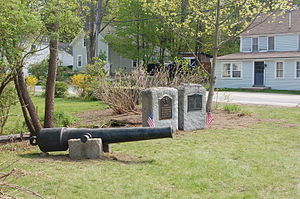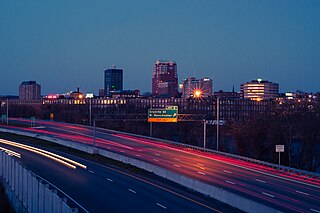
Hillsborough County is the most populous county in the U.S. state of New Hampshire. As of the 2020 census, the population was 422,937, almost one-third the population of the entire state. Its county seats are Manchester and Nashua, the state's two biggest cities. Hillsborough is northern New England's most populous county as well as its most densely populated.

Brookline is a town in Hillsborough County, New Hampshire, United States. The population was 5,639 at the 2020 census, up from 4,991 at the 2010 census. Brookline is home to the Talbot-Taylor Wildlife Sanctuary, Potanipo Pond, and the Brookline Covered Bridge.
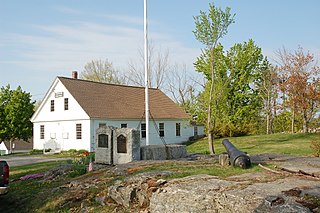
Lyndeborough is a town in Hillsborough County, New Hampshire, United States. The population was 1,702 at the 2020 census.

Mont Vernon is a town in Hillsborough County, New Hampshire, United States. The population was 2,584 at the 2020 census, up from 2,409 at the 2010 census.
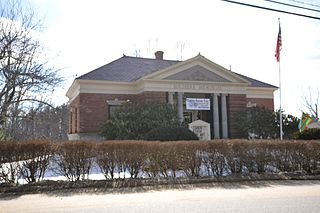
Deerfield is a town in Rockingham County, New Hampshire, United States. The population was 4,855 at the 2020 census, up from 4,280 at the 2010 census. Deerfield is the location of the annual Deerfield Fair.

Wentworth is a town in Grafton County, New Hampshire, United States. The population was 845 at the 2020 census, down from 911 at the 2010 census. The town is home to Plummer's Ledge Natural Area, and part of the White Mountain National Forest is in the northeast. The town has a picturesque common, presided over by a Federal-style church and bordered by antique homes.

Conway is a town in Carroll County, New Hampshire, United States. It is the most populous community in the county, with a population of 9,822 at the 2020 census, down from 10,115 at the 2010 census. The town is on the southeastern edge of the White Mountain National Forest. There are five villages in the town: Conway, North Conway, Center Conway, Redstone and Kearsarge. Additionally, it shares a portion of the village of Intervale with the neighboring town of Bartlett.

Milford is a town in Hillsborough County, New Hampshire, United States, on the Souhegan River. The population was 16,131 at the 2020 census, up from 15,115 at the 2010 census. It is the retail and manufacturing center of a multi-town area known informally as the Souhegan Valley.
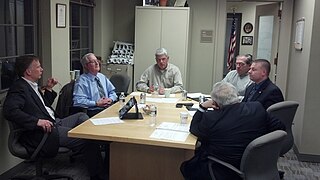
The select board or board of selectmen is commonly the executive arm of the government of New England towns in the United States. The board typically consists of three or five members, with or without staggered terms. Three is the most common number, historically.
2nd New Hampshire Infantry Regiment was the longest-serving volunteer regiment of the State of New Hampshire in the American Civil War.
Defunct placenames are those no longer used officially.
The Lafayette Artillery Company was founded in Peterborough, New Hampshire, in 1804 as the Artillery Company of the 22nd Regiment. It was part of the State of New Hampshire's artillery system, a forerunner to the National Guard. The group has continued to operate continuously since its founding, and since 1833 it has been headquartered at Lyndeborough, New Hampshire. Since the 1980s, it has been primarily an educational service organization, and participates in Civil War reenactments throughout the northeastern United States.

Citizens' Hall is the government office building and a community meeting place for the town of Lyndeborough, New Hampshire. Built in 1889 in the Stick–Eastlake Style, but one that is also heavily influenced by the Greek Revival, it is listed on the National Register of Historic Places for its importance as a community/social center for the town. It is located on Citizens' Hall Road in the village of South Lyndeborough.

The Lyndeborough Center Historic District, located in the town of Lyndeborough, New Hampshire, United States, consists of three structures: the Town Pound, Town Hall, and Congregational Church. The district was placed on the National Register of Historic Places in 1984. In 2010, by town meeting vote, this district became part of a larger, officially zoned local historic district.
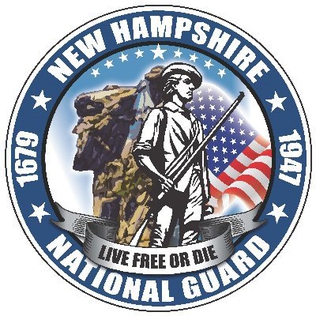
The New Hampshire Army National Guard is a federal military reserve force of the Army National Guard of the U.S. state of New Hampshire. Along with the New Hampshire Air National Guard, it is an element of the New Hampshire National Guard.

The 2018 New Hampshire Executive Council elections were held on November 6, 2018 to elect all five members of the Executive Council of New Hampshire. The party primaries were held on September 11.
